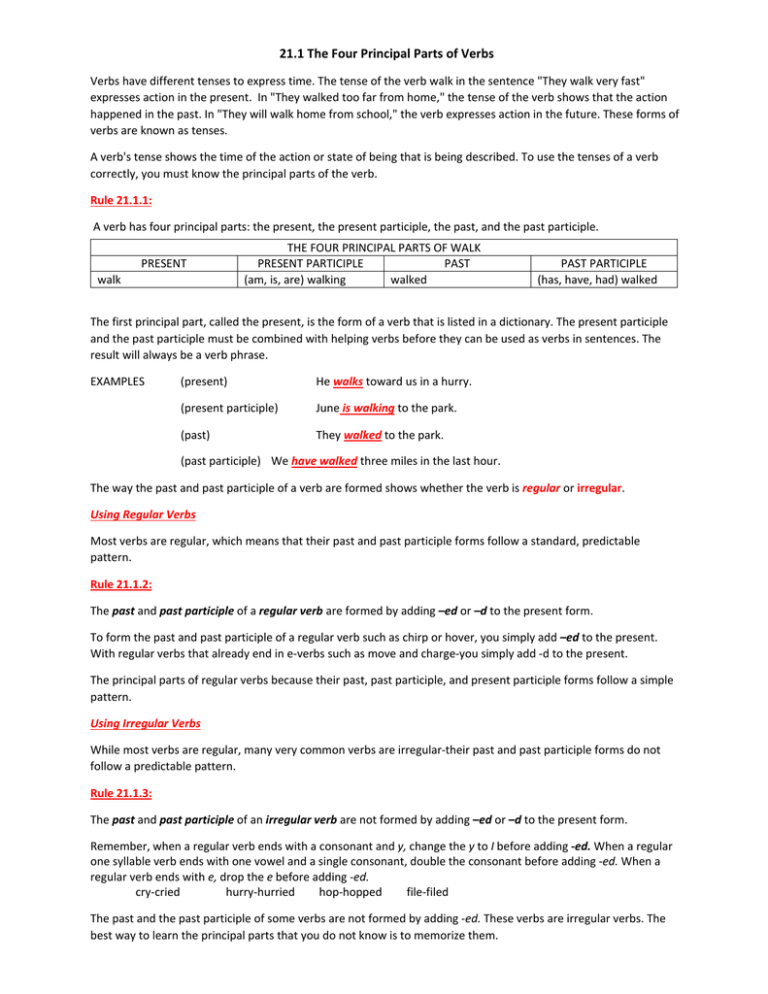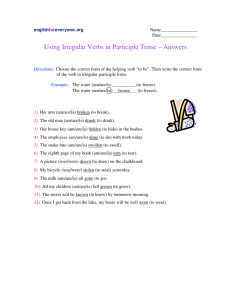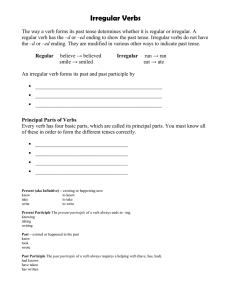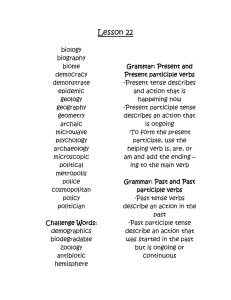21.1 The Four Principal Parts of Verbs
advertisement

21.1 The Four Principal Parts of Verbs Verbs have different tenses to express time. The tense of the verb walk in the sentence "They walk very fast" expresses action in the present. In "They walked too far from home," the tense of the verb shows that the action happened in the past. In "They will walk home from school," the verb expresses action in the future. These forms of verbs are known as tenses. A verb's tense shows the time of the action or state of being that is being described. To use the tenses of a verb correctly, you must know the principal parts of the verb. Rule 21.1.1: A verb has four principal parts: the present, the present participle, the past, and the past participle. walk PRESENT THE FOUR PRINCIPAL PARTS OF WALK PRESENT PARTICIPLE PAST (am, is, are) walking walked PAST PARTICIPLE (has, have, had) walked The first principal part, called the present, is the form of a verb that is listed in a dictionary. The present participle and the past participle must be combined with helping verbs before they can be used as verbs in sentences. The result will always be a verb phrase. EXAMPLES (present) He walks toward us in a hurry. (present participle) June is walking to the park. (past) They walked to the park. (past participle) We have walked three miles in the last hour. The way the past and past participle of a verb are formed shows whether the verb is regular or irregular. Using Regular Verbs Most verbs are regular, which means that their past and past participle forms follow a standard, predictable pattern. Rule 21.1.2: The past and past participle of a regular verb are formed by adding –ed or –d to the present form. To form the past and past participle of a regular verb such as chirp or hover, you simply add –ed to the present. With regular verbs that already end in e-verbs such as move and charge-you simply add -d to the present. The principal parts of regular verbs because their past, past participle, and present participle forms follow a simple pattern. Using Irregular Verbs While most verbs are regular, many very common verbs are irregular-their past and past participle forms do not follow a predictable pattern. Rule 21.1.3: The past and past participle of an irregular verb are not formed by adding –ed or –d to the present form. Remember, when a regular verb ends with a consonant and y, change the y to I before adding -ed. When a regular one syllable verb ends with one vowel and a single consonant, double the consonant before adding -ed. When a regular verb ends with e, drop the e before adding -ed. cry-cried hurry-hurried hop-hopped file-filed The past and the past participle of some verbs are not formed by adding -ed. These verbs are irregular verbs. The best way to learn the principal parts that you do not know is to memorize them.





